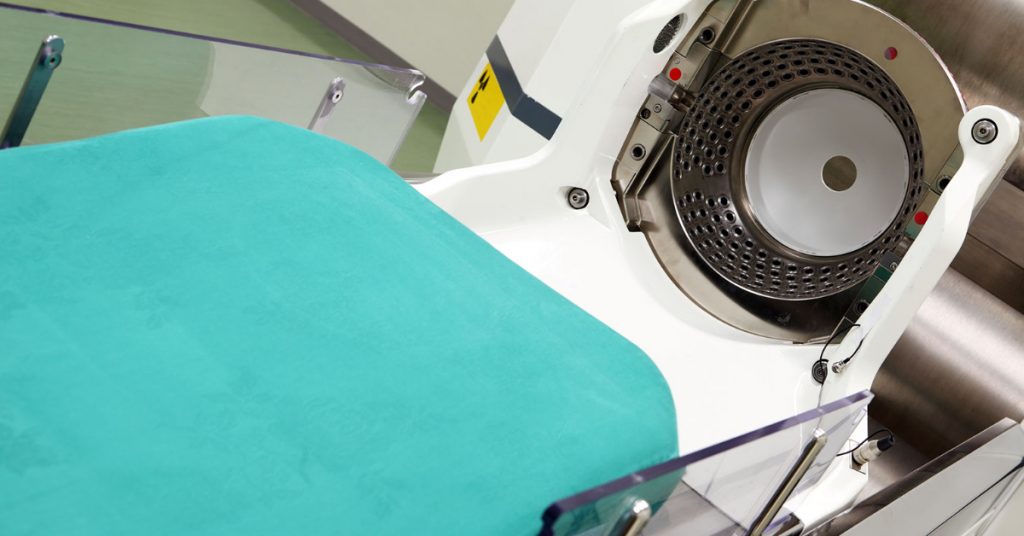Cost of Gamma Knife for AVM or Brain Tumor in India
| Treatment | Cost | Days in hospital | Days outside hospital | Total stay in India |
|---|---|---|---|---|
| Gamma Knife for AVM or Brain Tumor | USD 7800 | 3 | 7 | 10 |
Gamma Knife Radiosurgery
Purpose
Gamma Knife radiosurgery is considered a safer alternative to standard brain surgery i.e. neurosurgery. Standard brain surgery requires incisions in the scalp, an opening in the skull as well as the membranes surrounding the brain. Then your surgeon needs to dissect into the brain tissue. However, these steps are not required with gamma knife radiosurgery.
Gamma Knife radiosurgery is considered when a tumor or other abnormality in the brain is difficult to reach with standard neurosurgery. It is also preferred by patients by aren’t healthy enough to undergo standard surgery or by patients who prefer a lesser invasive treatment.
In some cases, Gamma Knife radiosurgery has a lower risk of side effects as compared to other types of radiation therapies. Compared to conventional radiation therapy which requires up to 30 days of treatment, gamma knife radiosurgery can be completed in a single day.
This procedure is most usually used to treat the following conditions-
Brain tumor: Gamma knife radiosurgery is quite useful in the management of small noncancerous and cancerous brain tumors.
Radiosurgery can damage the genetic material in the tumor cells. These cells lose their ability to reproduce and thus they die leading to the tumor to gradually shrink.
Arteriovenous malformation (AVM): AVMs are abnormal tangles of veins and arteries in the brain. In an AVM, blood flows from the arteries to the veins, bypassing smaller blood vessels which are also known as capillaries. AVMs, if left untreated, may “steal” the normal blood flow from the brain. This can cause a stroke and cause bleeding in the brain.
Gamma Knife Radiosurgery can effectively destroy the AVM and cause the blood vessels to close off over some time.
Trigeminal neuralgia: This is a disorder of one or both of the trigeminal nerves, which work to relay sensory information between your brain and areas of your forehead, cheek and lower jaw. This disorder can cause disabling facial pain which gives a feeling resembling an electric shock.
After this treatment, people will experience pain relief within a few days to a few months.
Pituitary tumors: Tumors of the bean-sized gland, located at the base of the brain can also cause multiple problems. The pituitary gland is responsible for the hormones in your body that control several functions, such as your metabolism, stress response, and sexual function.
Gamma Knife Radiosurgery can help in shrinking the tumor and it will also lessen the disruption of pituitary hormone regulation.
Acoustic neuroma: An acoustic neuroma also termed as a vestibular schwannoma is a noncancerous tumor that develops along the nerve of balance and hearing which leads from your inner ear to the brain.
When this tumor puts any pressure on the nerve, you can experience problems such as loss of hearing, loss of balance, dizziness as well as ringing in the ear. As the tumor continues to grow, it can even put pressure on your nerves affecting sensations and muscle movement in the face as well.
Gamma Knife Radiosurgery can help to stop the growth of an acoustic neuroma.
Preparation
First, the physician will be gathering your medical history and will be performing a complete physical exam. You might also need to undergo additional tests. If you are allergic to any medications or anesthetic agents have a heart pacemaker implanted medication pump, aneurysm clip, implanted nerve stimulator, metal from trauma, metal implants, severe lung disease, cochlear implant, spine stabilization hardware or esophageal reflux, then you need to inform your doctor. You also need to inform him/her if you are unable to lie flat on your back for 30 to 60 seconds, or if you suffer from claustrophobia.
You will need to arrange for a friend or family member to go with you on the day of your procedure. A nurse will inform you a day before the procedure to confirm the arrival time and answer any queries that you might have. On the evening before the procedure, do not consume any food or drink after midnight. Also, remember to wash your scalp properly.
Remember to wear your hair loose and avoid any clips, bands or pins. Do not use any hair spray or any other kind of styling product.
On the morning of the treatment, take your medications with sips of water. Bring all prescribed and over-the-counter medications with you. Also, make sure that you wear comfortable clothing. Avoid wearing a shirt that needs to be put on and taken off over the head.
Procedure
First, you will lie on a bed that slides into the Gamma Knife machine. Your head frame will be securely attached to a helmet inside the machine.
An intravenous tube will deliver fluids to your bloodstream so that you are hydrated during the procedure. Soon the bed you lie on will be sliding into the gamma knife machine.
The time taken for the procedure to be completed can sometimes be less than an hour. In some cases, it can take around four hours. Usually, this depends on how big the target is.
You will not feel the radiation, during the procedure, nor will you hear any noise during the procedure. There will be a microphone through which you will be able to communicate with the doctors.
Though Gamma Knife radiosurgery is an outpatient procedure in some cases, an overnight stay at the hospital might be required.
After the Procedure
Once the procedure is complete, the head frame will be removed and you will be able to eat and drink again. If you experience headache, nausea or vomiting after the procedure, you will be receiving the appropriate medications. You might experience minor bleeding or tenderness at the pin sites.
It is recommended that you ask a friend or family member to stay with you for the first night after the treatment to watch for any side effects. For a minimum of one week, keep your head in an elevated position on a pillow. This can help lessen any swelling at the pin sites as well as help in minimizing pressure within your head.
How successful the treatment is, depends on several factors including the size, location, type of lesion, your personal medical history and several other factors. It is best to discuss your expectations and outlook with your doctors before the procedure.
Risks
Since Gamma Knife radiosurgery doesn’t involve surgical incisions, it is less risky as compared to traditional neurosurgery. In traditional neurosurgery, there are potential complications which are associated with anesthesia, bleeding and infection.
Usually, any early complications or side effects are temporary. Some patients can experience mild headaches, a tingling sensation on the scalp, nausea or vomiting. Sometimes, there might be other side effects too, which can include fatigue, swelling or scalp and hair problems.
Video explanation
Possible side-effects
Although Gamma Knife is a safe and widely accepted procedure, the patient may experience the following side-effects/discomforts during and after procedure:
- Local discomfort of the scalp at the sites where pins are inserted.
- Numbness of the scalp around pin, which may resolve over a day or two.
- Mild Headache & nausea, resolving rapidly.
FAQs
How effective is Gamma Knife surgery?
Gamma Knife Radiosurgery is considered quite effective. Seventy to 90 percent of AVMs are completely obliterated. Gamma Knife radiosurgery has prevented tumour growth in 97 percent of patients.
Is the Gamma Knife painful?
It is bloodless, virtually painless, does not result in hair loss and has a rapid return to pre-treatment activities.
How long does Gamma Knife surgery last?
30 minutes to 3 hours depending on the plan.



